Shockwave therapy is a non-invasive treatment that uses radial pressure waves to carry high energy to a painful area to initiate a healing response in chronic injuries.
Extracorporeal Shock Wave Therapy (ESWT) is the application of shock waves in medicine.
It is clinically proven that pressure waves - when applied to injured tissues - stimulate metabolic reactions contributing to:
- Reduction of pain felt by nerve fibres
- Increase of blood circulation in surrounding soft tissues
- Beginning of healing process triggered by stem cells activation
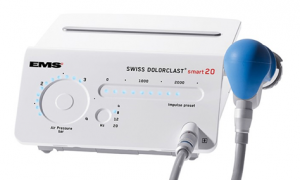
- Bursitis
- Hip Pain
- Knee Pain
- Medial Tibial Stress Syndrome (Shin Splints)
- Muscle Pain
- Plantar Fasciitis & Heel Pain
- Tendinopathy: Achilles, Patella, Gluteal, Hamstring, Shoulder
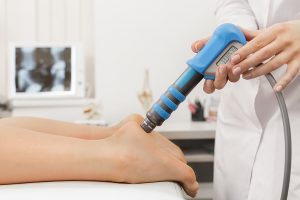

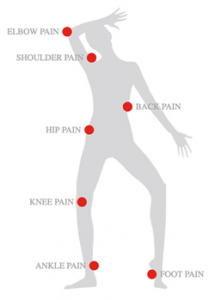
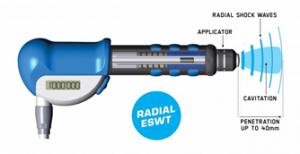
Shockwave is administered for 5-15 minutes and patients may feel mild-to-moderate discomfort during the treatment.
Patients may be able to bear weight and move better immediately, and there is no disruption to daily activities.
ESWT is used successfully in sports medicine and in daily medical practice worldwide. The effectiveness of ESWT has been demonstrated in a multitude of clinical studies. With no negative side effects, injections or strong medications needed, you will be able to resume your regular activities after treatment.
Shockwave therapy treats the painful area directly by promoting a healing response, not just improving the symptoms. The treatment has shown to produce great results in people suffering long term pain from conditions such as Achilles tendon problems and plantar fasciitis.
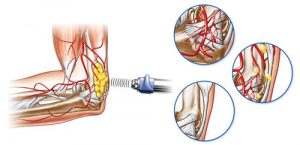
1. Generates New Blood Vessel
Nutrient blood flow is necessary to start and maintain the repair processes of damaged tissue structure. The application of acoustic waves creates capillary micro-ruptures in tendon and bone, stimulating new blood vessel growth in the treated area. New blood vessels provide essential blood flow and oxygenation, supporting faster healing in bones, tendons, and other soft tissues.
2. Reverses Chronic Inflammation and Increases Cell Regeneration
Inflammation is not all evil and is necessary for healing. However, chronic (long-term) inflammation can occur when the inflammatory response is not halted due to repetitive injury, thereby becoming chronic pain. Shockwave therapy can reduce chronic inflammation to an acute stage by increasing and inducing mast cells to the area. Mast cell activation is followed by production of chemokines and cytokines. These pro-inflammatory compounds enhance the inflammatory process and then help restore normal healing and regenerative processes.
3. Stimulates Collagen Production and Strengthens Connective Tissues
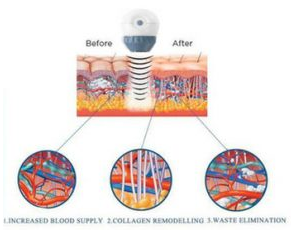
Collagen is essential for repairing damaged muscles, ligaments, and soft tissues. Shockwave therapy accelerates this procollagen synthesis. The therapy produces denser and stiffer tendon fibres, creating a firmer, more supportive structure.
4. Reduces Calcification in Long Term Conditions (e.g. Achilles Tendonitis)
Calcium build-up is usually the result of micro-tears or other trauma to a tendon or muscle. Acoustic waves break up the existing calcifications. Shockwave therapy starts the biochemical decalcification of the calcium build-up. The granular particles of calcium are then removed by the lymphatic system.
5.Releases Trigger Points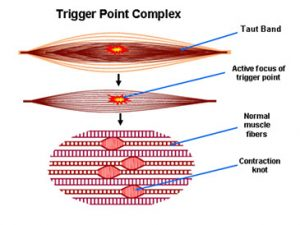
Trigger points are the principal cause of pain and tightness in most muscles of the body. The taut bands within the muscle fibres contract so much, cutting off their own blood supply, and causing waste product build up. This irritates nerve endings, causing more contraction.
Shockwave therapy releases the tightness in these areas.
6.Reduces Substance-P: Pain Receptors
The shockwave application triggers a release of Substance P, causing an immediate decrease in pain. Substance P causes blood vessel dilation, facilitating further healing of the tissue. The nerves that cause pain are numbed. Patients may then be pain free (or have significantly reduced pain) when undertaking activities that usually cause pain.
Patients usually require 2-3 treatments. Patients normally experience immediate improvement from Shockwave Therapy. For some patients, there may be a delayed onset of pain relief, sometimes a few weeks following treatment.
Shockwave Therapy: Not Suitable for Everyone
Our therapists will conduct a thorough medical history to determine if Shockwave Therapy is suitable for your injury/condition. Patients with the following should AVOID Shockwave Therapy:
Acute inflammations
Arterial disease, circulatory insufficiency
Deep vein thrombosis, phlebitis, varices
Gynaecological disorders involving acute inflammation
Haemophilia, or other coagulation disorders
Haemorrhages or at risk of haemorrhage
Implants, damaged implants, areas where implants have been removed
Malignant tumours and other diagnosed tumours
Metal inclusions
Polyneuropathy area (loss of sensation)
Pregnancy
Severe arterial obstruction
Swellings that still feel warm
Taking anticoagulant pharmaceuticals (blood thinners)
FAQs - Shockwave Therapy
There may be some discomfort with the treatment, depending on the site and the level of pre-existing pain. Treatment will last for few minutes with each application, and the intensity can be adjusted to suit your pain tolerance.
The consultation will normally take 20-30 minutes depending on the location and assessment of your injury. Our therapist will locate and mark the painful areas. Conductor gel is applied to the area/s so that the radial pressure wave can be transmitted to the injury site.
The number of treatments depends on your injury, duration of injury, and your response to the treatment. We will start with 1 treatment per week, on a weekly basis, and assess results. The effect of the treatment is cumulative, so, generally, multiple treatments are required. Normally, you will see improvement during treatment.
For some patients, it may take up to 12 weeks to see maximum results, as the main effect of the treatment - the development of new blood vessels – occurs over time.
Pain is rarely experienced by our patients after the treatment. However, some soreness may occur to the treated area within the first 24-48 hours. The soreness has been reported to be tolerable and not limiting.
We recommend avoiding heavy physical activities for 48 hours, especially for the treated area.
Generally, our therapists advise to continue with other treatments prescribed, such as stretching and strengthening exercises, wearing orthoses, and other treatments that have been provided. Our therapists will assess after each treatment and advise if normal activities need to be paused.

